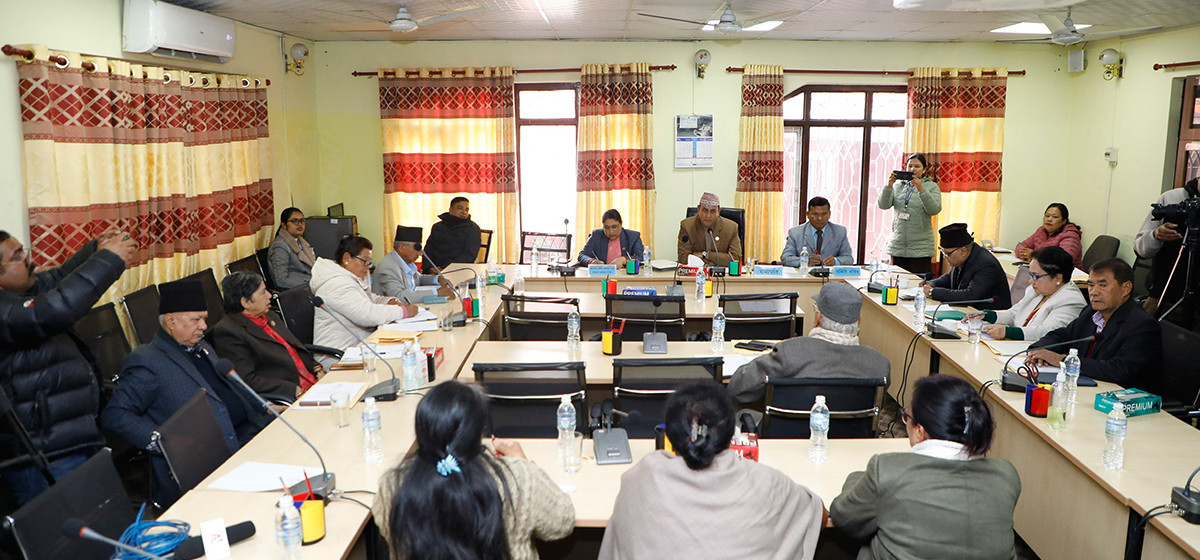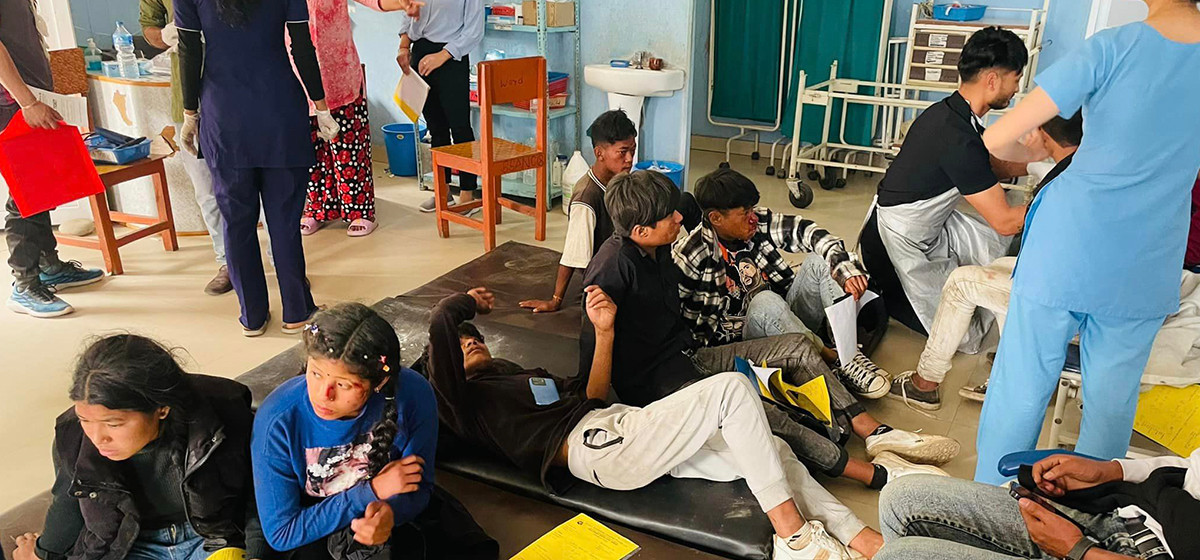
OR
Scrub tyhpus claimed 11 lives, 667 people infected till Nov 15: EDCD
Published On: January 26, 2018 08:01 AM NPT By: Bishnu Prasad Aryal
KATHMANDU, Jan 26: A total of 667 patients were infected by Scrub typhus in 39 districts in the current fiscal year that began in mid-July. Among the infected patients, 11 patients have died.
Dr Bhim Acharya, director at the Epidemiology and Disease Control Division (EDCD), said that 667 patients were found infected by the disease in 38 districts till November 15 and eleven patients died,” said Dr Acharya. “The records of patients after November 15 have yet to be received.”
Additionally, 10 patients have been recently diagnosed with scrub typhus in Lalitpur district. The disease was also detected in Bhaktapur in the past.
The disease is often found in Chitwan, Nawalparasi and other hill and tarai districts. Among 667 patients in 39 districts, 127 were from Chitwan, 80 from Nawalparasi, 66 from Makwanpur, 62 from Palpa, 53 from Kailali and 37 from Gulmi.
Among the 11 dead, two were from Chitwan, three from Syangja, two from Nawalparasi, one from Gulmi, one from Dang, one from Rupandehi and one from Makwanpur.
“However, there is no need to panic,” said Dr Acharya, adding, “If the disease is diagnosed on time, it can be cured easily,” he added. “There is no shortage of medicines. Scrub typhus should be treated with antibiotic doxycycline (Tetracycline) for patients of all ages.”
According to the EDCD, Scrub typhus patient with severe illness may develop organ failure and hemorrhage and the patient can die if there is no timely medical intervention. The disease can be diagnosed through a simple blood test. An infected person will start showing symptoms of the disease in between six days to three weeks.
Dr Acharya advises not to sleep out in the open and avoid lingering in the bushes to prevent mite bites. He said the mites spread from rats. “So we have to keep our surroundings clean,” he added.
The most common symptoms of Scrub typhus are fever (up to 105 degrees) and chills, headache, body aches and muscle pain, a dark scab-like region at the site of flea bite, mental changes ranging from confusion to coma, enlarged lymph nodes and rash.
It lasts for two to three weeks without treatment. Severe infections may cause interstitial pneumonia, pulmonary edema, congestive heart failure, circulatory collapse, and a wide array of signs and symptoms of central nervous system dysfunction, including delirium, confusion, and seizures. Patients may die as a result of these complications, usually late in the second week of the illness.
You May Like This

Scrub typhus claimed 11 lives, 667 people infected till Nov 15: EDCD
KATHMANDU, Jan 25: A total of 667 patients were infected by Scrub typhus in 39 districts in the current fiscal year... Read More...

One dies from scrub typhus in Chitwan, over 100 people infected with swine flu
CHITWAN, August 7: The District Public Health Office (DPHO), Chitwan, has confirmed the death of woman from scrub typhus. ... Read More...

Submit guns by Nov 16: Kathmandu DAO urges people
KATHMANDU, Nov 3: The District Administration Office (DAO), Kathmandu has urged individual gun owners to compulsorily handover licensed arms (guns and... Read More...





Just In
- Gold price increases by Rs 700 per tola
- Fire destroys wheat crop in Kanchanpur, Kailali
- Bipin Joshi's family meets PM Dahal
- State Affairs and Good Governance Committee meeting today
- Gold items weighing over 1 kg found in Air India aircraft at TIA
- ACC Premier Cup semi-final: Nepal vs UAE
- Sindhupalchowk bus accident update: The dead identified, injured undergoing treatment
- Construction of bailey bridge over Bheri river along Bheri corridor reaches final stage













Leave A Comment